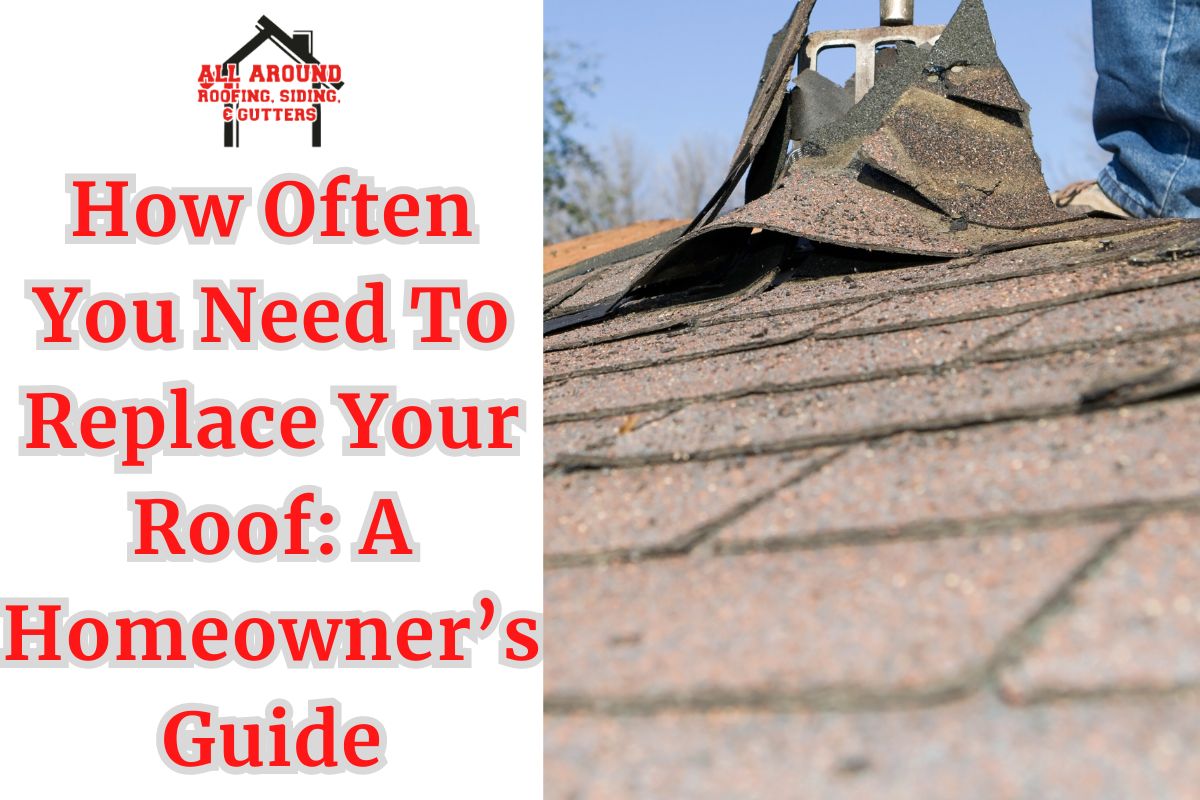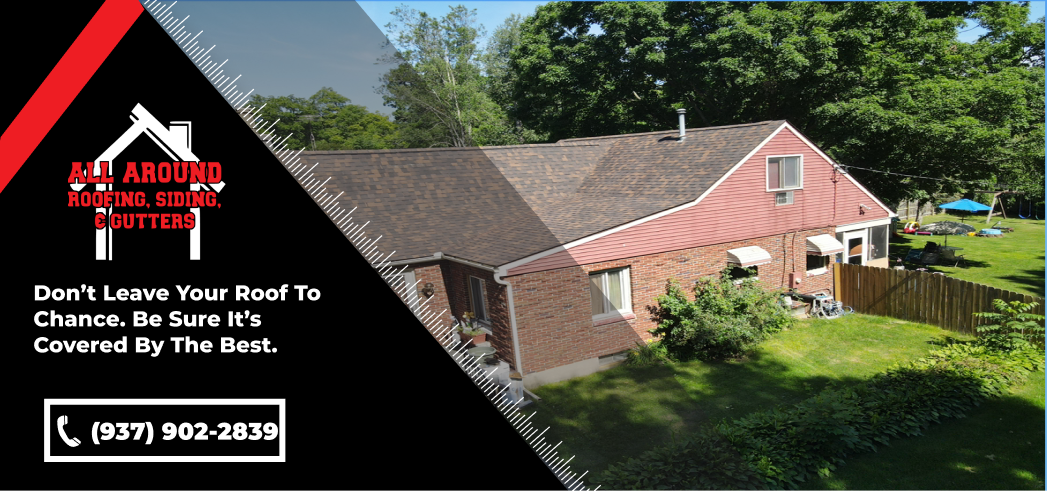Your roof is one of the most important parts of the house, protecting your family and belongings from the weather and preserving the structural integrity of your home. Unfortunately, deterioration can eventually take its toll, making a replacement necessary. That is why, for your home’s safety and longevity, you must know when, why, and how often to replace your roof.
In this blog post, we’ll discuss how often you have to replace a roof, what influences its lifespan, and maintenance ideas to keep your home looking good.
What Is The Typical Life Expectancy Of A Roof?
The frequency of replacement and the life expectancy of a roof depend on different factors, such as the roofing material, climate conditions, and the amount of upkeep. Specifically with each type of material, there is a different estimated lifespan:
| MATERIAL | DURATION |
| Asphalt Shingle Roofs | 15-20 years |
| Metal Roofs | 40-70 years |
| Tile Roofs | 50-100 years |
| Wood Shingles | 20-30 years |
| Slate Roofs | up to 100 years |
When Is The Right Time To Replace A Roof?
The best months to replace a roof are usually late summer or early fall, especially June through September. The typically dry weather allows for easier installation and more flexible scheduling. Although fall is a good time to replace a roof because of the mild conditions and lower demand for roofers, homeowner preferences and the extent of the damage still come first.
However, unexpected events can call for an emergency replacement, which means you should be prepared to work with reputable contractors year-round. In this case, a timely replacement is necessary to prevent further harm and guarantee home safety. Age and condition are also important factors to consider, particularly if the roof is over 20 years old or showing damage.
To ensure your roof is in good condition, roofing contractors generally recommend scheduling a professional inspection at least once a year. Speaking with qualified roofers also makes assessing the necessity and finances of a replacement easier.
Signs Your Roof Needs To Be Replaced
As a homeowner, there are many signs of roof damage that you should be aware of:
1. Water Damage
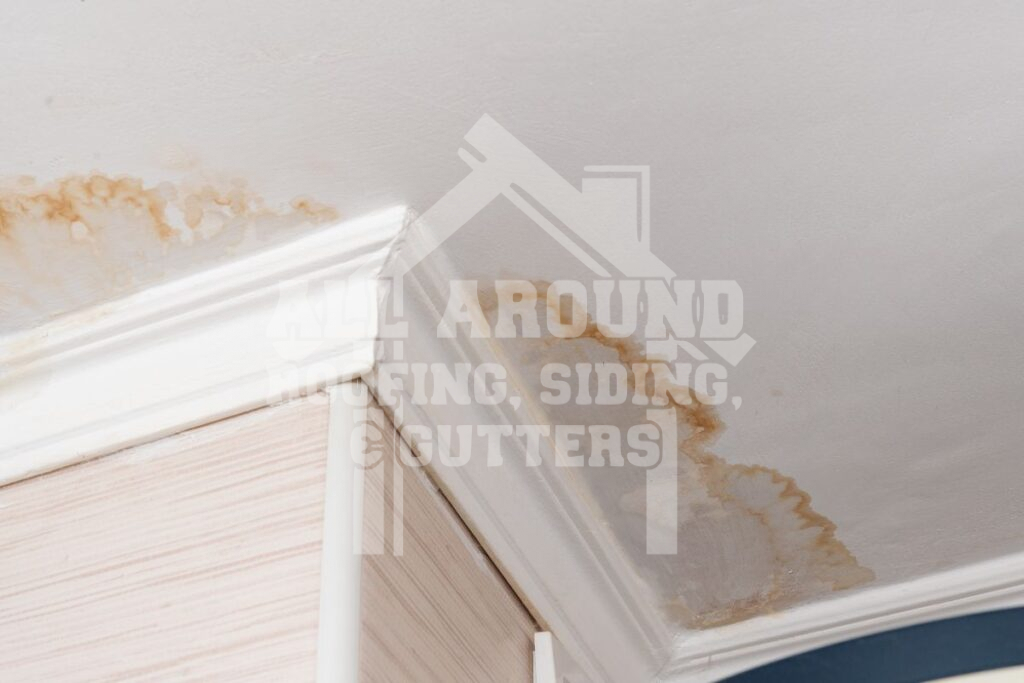
An obvious sign that your roof might be weakened is water damage, such as leaks, stains, and discoloration on walls or ceilings. These indicators mean that water is leaking through the roof’s coverings, which could lead to mold growth and structural damage.
2. Growth of Moss and Mold

If you notice algae, mold, or moss growing on your roof, it means there is too much moisture, which could be causing the roofing materials to deteriorate. This growth has the potential to impair a roof’s capacity to drain water, and can build an atmosphere that invites more damage and health risks.
3. Missing or Loose Roof Shingles
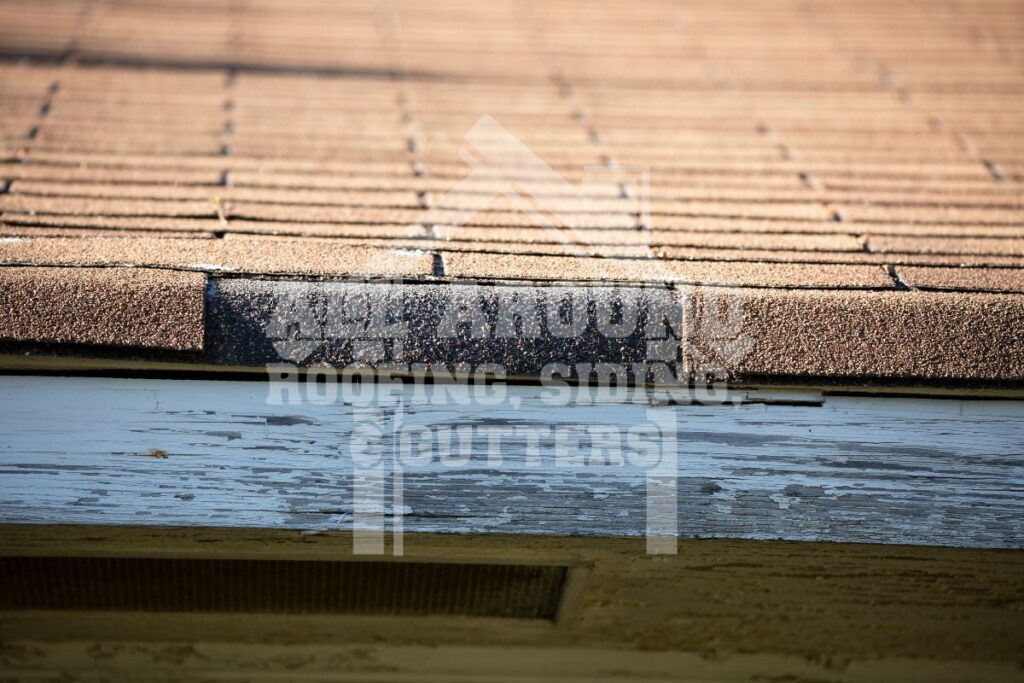
Not only can missing or loose roof shingles be unsightly, but they also put a building at risk for accidents, water intrusion, and structural weakness. Maintaining the structure of the roof and preventing more serious damage require immediate attention to broken or misplaced shingles.
4. Damaged Flashing
Flashing is essential for preventing water intrusion into the roof’s weak spots, which include joints and valleys. If neglected, corroded or damaged flashing can undermine this defense, resulting in leaks, water damage, and possibly expensive repairs.
5. Debris in the Gutters
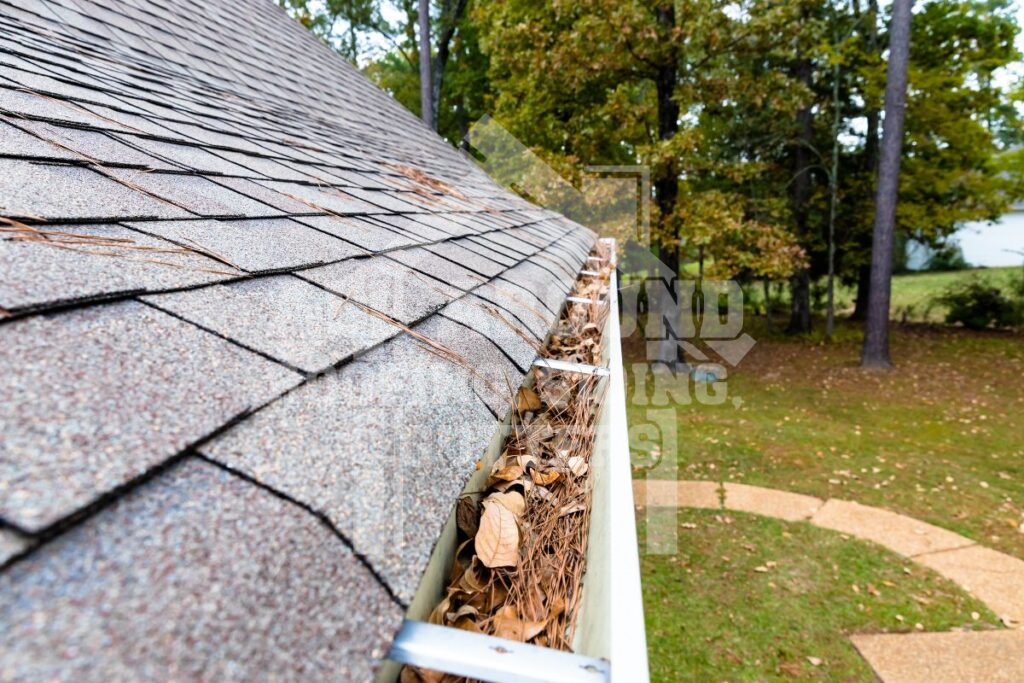
Excessive debris in your gutters, such as shingle granules, can be another sign of roof degradation. This debris can accelerate roof wear, clog gutters, and obstruct water drainage. Frequent inspections and maintenance can help spot these problems early and prevent additional damage.
6. Attic Leaks
Clear indicators of a leaky roof are water stains or moist areas in the attic. To avoid structural damage, the growth of mold, and possible health risks from water infiltration, it is imperative to address these leaks promptly.
7. Rotting Underlayment
If left ignored, a rotting underlayment beneath the roofing materials can cause significant damage and jeopardize the structural integrity of the roof. This deterioration makes the roof less effective at shielding your home from the weather, so it needs to be fixed right away to stop further damage.
What Are Different Factors That Influence Roof Lifespan?
1. Quality of the Installation
Proper roof installation by experienced contractors is crucial. Errors like misalignment or improper fastening can cause premature failures. Correct installation initially prevents costly repairs later.
2. Type of Underlayment
Heavy duty roofing underlayment prevents leaks, protects the decking, and reduces moisture buildup. It acts as a secondary barrier against water intrusion, extending the roof’s life significantly.
3. Insulation & Ventilation
Adequate attic insulation and ventilation regulate indoor temperatures, reducing stress on the roof. High moisture levels can lead to moss growth, water damage, and rot, reducing the lifespan of your roof. Proper insulation prevents ice dams and ventilation reduces moisture, preserving the roof’s integrity.
4. Color of the Roofing Material
Roof color affects its lifespan due to heat absorption. Darker colors absorb more heat, potentially accelerating damage. Lighter shades stay cooler, extending the roof’s lifespan by reducing thermal stress.
5. Roof Slope
Roof slope affects water-shedding efficiency. Lower slopes are at higher risk of deterioration due to slower water movement, requiring more durable materials. On the other hand, steeper slopes may need extra reinforcement for stability.
6. Local Climate
Weather conditions, such as humidity, UV exposure, and extreme temperatures, can affect the lifespan of your roof. Choosing materials suited to the climate and promptly addressing severe weather damage is crucial. For instance, metal roofs are better for areas with heavy snowfall due to their strength.
7. Maintenance
Regular maintenance, including gutter cleaning, inspections, and timely repairs, prolongs lifespan. Professional inspections and preventive maintenance identifies issues early, preventing premature wear and ensuring long-term protection.
8. Roofing Material
As already mentioned above, the choice of roofing material greatly impacts lifespan. Asphalt roofs usually last 20–30 years, while with proper maintenance, slate, tile, and concrete roofs can last more than 50 years. Wooden roofs typically last 20 years, and sturdy metal roofs can last up to 50 years.
Maintenance Tips to Extend Your Roof’s Life
- Regular Cleaning: Clear debris from the roof surface and consider professional cleaning yearly.
- Tree Trimming: Trim branches near your home to prevent damage and deter animals.
- Professional Inspections: Schedule regular inspections to catch issues early and save on repairs.
- Ice Dam Removal: Promptly remove ice and snow to prevent structural strain.
- Mold Removal: Check for mold regularly and consult professionals for removal.
- Proper Insulation: Ensure proper insulation to regulate temperature and reduce the chances of premature aging.
- Shingle Replacement: Replace cracked or missing shingles promptly.
How Much Does It Cost To Replace A Roof?
On average, a new roof costs between $5,700 and $16,000. This price range includes around $200 to $300 per square (100-square feet) for labor and from $80 to $250 per square for materials.
In addition, the price per square foot for shingle removal ranges from $1 to $3.
Looking For A Roof Replacement Contractor? We Have Got You Covered!
Timely roof replacement is crucial for maintaining the stability, aesthetic appeal, and market value of your home. To make sensible choices for your home, it is important to identify when a roof needs to be replaced and know all the factors that affect roof longevity. Don’t undervalue maintenance and routine inspections, as being proactive can save you from emergency replacements and extensive repairs.
When the time comes for a professional roof replacement, rely on All Around Roofing, Siding & Gutters. Our team of skilled roofers and dedication to excellence guarantee that your new roof is installed accurately and carefully. With All Around Roofing, Siding & Gutters as your go-to choice for roof replacement services, you can safeguard your home and your loved ones. Give us a call at (937) 902-2839.

